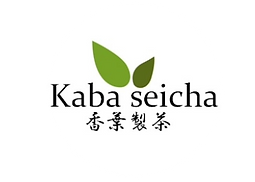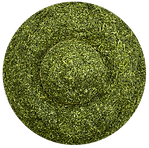Types Of Japanese Green Tea
Tea is the most commonly drunk beverage in Japan and an important part of Japanese food culture. Various types of tea are widely available and consumed at any point of the day. Green tea is the most common type of tea, and when someone mentions "tea" (お茶, ocha) without specifying the type, it is green tea to which is referred. Green tea is also the central element of the tea ceremony. Among the most well-known places for tea cultivation in Japan are Shizuoka, Kagoshima and Uji.
The following is a list of the main varieties of tea that are popularly consumed in Japan:
Tea from tea plant
Ryokucha (green tea): gyokuro, sencha, bancha
Various grades of green tea are cultivated, differing on the timing of harvest and on the amount of sunlight the tea leaves are subjected to. The highest grade is gyokuro, which is picked during the first round of harvest and shaded from the sun for some time before harvest. Next is sencha, which is also picked during the first round of harvest but whose leaves are not protected from the sun. Finally, bancha is a lower grade of green tea whose leaves are obtained from the later rounds of harvesting.
Matcha (powdered green tea)
Only the highest quality leaves are used for matcha, which are dried and milled into a fine powder which is then mixed with hot water. Matcha is the form of green tea that is used in the tea ceremony.
Konacha (residual green tea)
Konacha consists of tea dust, tea buds and small tea leaves remaining after processing gyokuro or sencha. Although considered a lower grade of tea, konacha is thought to complement certain foods well, such as sushi. It is often provided for self-service at inexpensive sushi restaurants.
Hojicha (roasted green tea)
Hojicha is processed by roasting the tea leaves, which gives the leaves their characteristic reddish-brown color. The heat from the roasting also triggers chemical changes in the leaves, causing hojicha tea to have a sweet, slightly caramel-like aroma.
Genmaicha (green tea with roasted brown rice)
Genmai is unpolished, brown rice. Genmai grains are roasted and mixed with tea leaves to produce Genmaicha. The roasted genmai give the tea its yellowish color and special flavor. Genmaicha is popularly served as an alternative to the standard green tea.
Oolongcha (a type of Chinese tea)
Oolongcha involves allowing the tea leaves to oxidize, and then steaming or roasting them to stop the oxidization process. Oolongcha is popularly served hot and cold at virtually all types of dining establishments across Japan. The tea is brown in color.
Kocha (black tea)
Kocha leaves are even more oxidized than oolongcha, which gives the tea its dark color. In the Japanese language, "kocha" actually means "red tea", referring to the reddish-brown color of the tea. Kocha is widely available at Western style cafes and restaurants.
Jasmine-cha (tea with jasmine flowers)
Jasmine tea is widely consumed in Okinawa, where it is known as sanpincha, but not so much in the other parts of Japan. The tea is made by combining jasmine flowers with a green tea or sometimes oolong tea base.
Tea not from tea plant




.png)
_edited.png)
_edited.png)
_edited.png)
_edited.png)
_edited.png)
_edited.png)
_edited.png)
_edited.png)
_edited.png)
_edited.png)
_edited.png)
_edited.png)
.png)
_edited.png)
_edited.png)
_edited.png)
_edited.png)
_edited.png)